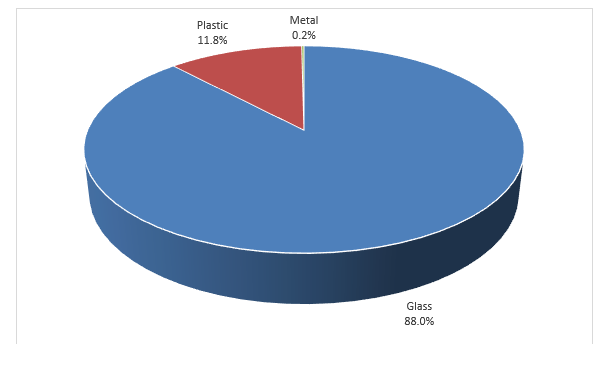Because efforts to ‘reduce’ and ‘recycle’ packaging waste cannot provide a complete solution, some in the industry are increasingly looking at ‘reuse’ to provide an additional part of the solution. A new report from Smithers,
The Future of Refillable and Reusable Packaging to 2027, delves into the circular economy movement that believes companies should replace single-use packaging with reusable packaging.
Reusable packs offer a more durable plastic container or a metal or glass container that can be either refilled in a store, returned to a store, or refilled in a consumer’s own home. Although, for a reuse programme to work effectively, consumers will demand simplicity and convenience.
Refillable and reusable packaging sales amounted to $35.1 billion in 2017 and have grown at an average annual rate of 3.4% to $40.1 billion in 2021, according to Smithers’ data. Refillable and reusable packaging sales are projected at $42 billion in 2022 and are forecast to grow 5% annually during 2022-27 to $53.5 billion. Refillable and reusable packaging sales account for an estimated 4% of global packaging sales in 2021. In 2027, refillable and reusable packaging sales are forecast to have reached 4.2% of global packaging sales.
A large number of small-scale developments for reuse and refill of reusable consumer packaging have emerged since 2017, but much more needs to be done. More trials and scaling up of pilot projects on everyday household items must become available to consumers if refill and reuse is to become more mainstream.
There is not a single reuse model that works with all products and in every situation. Different consumers have different needs and wants, which depend on a host of factors – where they live, how they shop and what they buy. Likewise, different product categories work better ‘in-store’ rather than at home, and vice versa. Success depends on tailoring solutions accordingly, removing barriers to entry, and keeping systems as simple as possible.
Civic and industry collaboration
Collaboration is also essential in enabling reusable packaging initiatives to have a successful outcome. This involves ‘buy-in’ from retailers, manufacturers, delivery services, civil society organisations and, of course, consumers. There is also a critical role for governments, especially in helping promote innovation and encouraging investment. Consumers also indicate in surveys that they are receptive to, or are already using refill services, but very few are using them habitually.
Technology developments
Current technology developments for refillable and reusable packaging include better cleaning machinery and refill machinery, improved design and durability of refillable packaging and the gradual introduction of smartphone apps to facilitate the uptake of reusable packaging by consumers. Going forward, the use of smart packaging, smartphone apps and ‘track and trace’ technology are likely to become more prominent in the reusable packaging space.
Material markets
Glass is by far the largest material type used for production of refillable and reusable packaging for the mature business-to-consumer market segment. Plastic is the second largest material, with metal use largely restricted to reusable water bottles.
Plastic is the largest material type used for production of refillable and reusable packaging in developing market, followed closely by glass and metal. Metal is the largest material type for reconditioned industrial/transit intermediate bulk containers and drums, followed by plastic drums.
Global refillable and reusable packaging sales in mature markets, percentage share by material, 2021
 Source: Smithers
End-use markets
Source: Smithers
End-use markets
Refillable and reusable packaging is sub-divided into two market segments, the mature or established market and the developing market. The mature market covers the business-to-consumer and industrial/transit business-to-business markets. The mature business-to-consumer market segment includes three main end use sectors; drinks, home care and personal care packaging (mainly the Japanese refill market).
Consumer packaged goods products, including home care and personal care products have been at the forefront of the reusable packaging trend in the developing market. Products are being packaged using reusable or fully recyclable materials such as rigid plastics, metal, glass, and engineered plastics.
The food industry has however been relatively slow to adopt refillable and reusable packaging. Here, a growing number of pilot projects are underway using the business modes such as ‘refill at home’, ‘return to store’, or ‘refill in-store’ from refill stations. The food products available in refillable and reusable packaging was initially focused mainly on dried foods. Since 2021, however, other food products are beginning to be offered in refillable and reusable packaging, including sauces and spreads, preserves, cereals, confectionery and savoury snacks.

